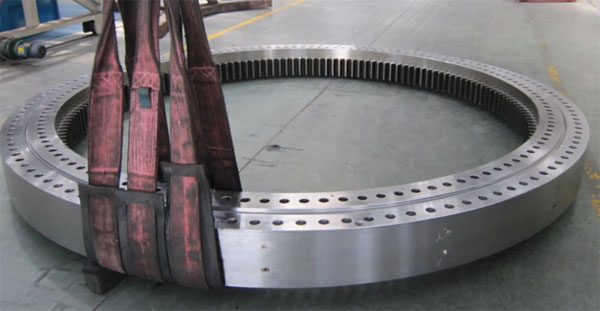Home / News / Understanding the Function and Applications of Slewing Bearings
Understanding the Function and Applications of Slewing Bearings
Slewing bearings are a type of rotary bearing that can support large axial loads, radial loads, and tilting moments. They are commonly used in machinery and equipment that require smooth rotation with minimal friction, such as cranes, excavators, wind turbines, and medical equipment.
Function of Slewing Bearings
Slewing bearings consist of two rings, with one ring rotating around a fixed axis relative to the other. The rotating ring is mounted on the machine or equipment and the stationary ring is mounted on the structure. The space between the two rings is filled with rolling elements, such as balls or rollers, that allow for smooth rotation with minimal friction.
The function of slewing bearings is to support the weight of the machine or equipment and transfer the loads from the rotating ring to the stationary ring. They also provide a stable and smooth platform for the machine or equipment to rotate on, ensuring precise movements and minimizing wear and tear.
Types of Slewing Bearings
There are several types of slewing bearings, each with their own unique features and applications. The most common types include:
Four-point contact slewing bearings: These bearings have a single row of balls or rollers and can support axial, radial, and tilting moments. They are ideal for applications that require high precision and load carrying capacity.
Double-row ball slewing bearings: These bearings have two rows of balls and can support both axial and radial loads. They are commonly used in applications that require high-speed rotation and low friction.
Cross roller slewing bearings: These bearings have crossed rollers instead of balls and can support high radial and axial loads. They are ideal for applications that require high precision and stiffness, such as machine tools and robotics.

Applications of Slewing Bearings
Slewing bearings have a wide range of applications in various industries, including:
Construction machinery: Slewing bearings are commonly used in cranes, excavators, and other heavy machinery to support the weight of the equipment and enable smooth rotation.
Wind turbines: Slewing bearings are used in the yaw and pitch systems of wind turbines to enable them to rotate and adjust their angle in response to changing wind conditions.
Medical equipment: Slewing bearings are used in medical equipment such as CT scanners and MRI machines to enable precise movement and positioning.
Robotics: Slewing bearings are used in robotics to enable smooth and precise movements, such as rotating joints and arms.
Conclusion
Slewing bearings are an essential component in machinery and equipment that require smooth rotation and precise movements. They come in different types and sizes to suit various applications and industries. As technology advances, the demand for slewing bearings will continue to grow, and their function and applications will become even more crucial in modern machinery and equipment.
- Previous: Exploring the Versatility of Tapered Roller Bearings
- Next: Understanding Ball Bearings: Types, Applications, and Advantages













